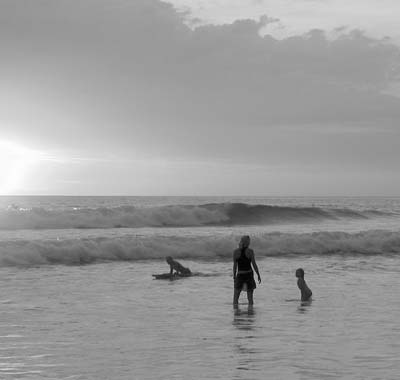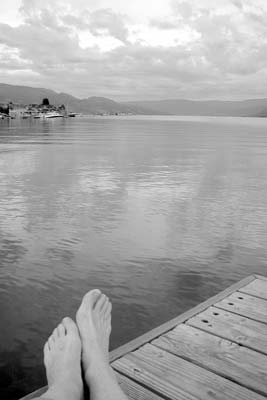You asked!
by Janet Denninger
Thanks to all of you readers who contacted me to let me know you like this column and to share your photographic questions. I do enjoy hearing from you and helping you to make your photos better. What I am learning from you is we all face the same challenges.
• A small, wise investment! Many of us stretch our budgets to buy the best camera for our purposes, then go out and drop it on a marble temple floor (personal experience). Most often this either breaks or scratches the lens or destroys the threads, making it impossible to use a creative filter.
So what is the first thing we do before we take the camera on vacation? Buy a UV filter! Not only does that remove some glare, more importantly it protects your expensive lens from most damage. A broken filter is easily replaced.
• For those exploring destinations in icy climates, here are a few reminders.
Cold can cause your camera to malfunction. Be sure to carry a clean dry cloth to wipe condensation from the camera body (not the lens). A few packets of silica gel in your camera bag can absorb extra moisture. Dry them overnight.
Keep batteries warm by carrying them in an inside pocket, and have lots of fresh ones available.
Damp can fog your lens. Let your camera cool off or warm up gradually — don’t wipe the lens surface!
• Don’t miss the small stuff. It’s easy to get hypnotized by the grandeur of the landscape. By getting down into the tundra you will find a world of colorful mushrooms and flowers. A macro lens or inexpensive close-up filters will help you make the most of these tiny treasures.
• Never run out of film (or digital space) or forget to load your camera (believe me, all photographers have done this). I once shot 25 frames of a grizzly at close range before I realized I had not reloaded. By the time I did, all I got was a retreating bear butt!
• Wildlife requires speed and space. Even if it’s just grazing, that moose needs sharp focus. Set your camera for a high speed — 250th of a second or more — and open the lens up for more light (larger aperture such as 5.6). This will limit your depth of field, but a fuzzy background is more flattering to your moose anyway.
Focus on his eyes, steady the camera and shoot lots of frames. One will be the sharpest.
Don’t get too close. Even if the animal runs away instead of charging, you have jeopardized his well being. If you notice an animal looks nervous, back off.
Some animals are accustomed to people and may approach seeking a handout. Don’t feed them! This interferes with their natural instinct to forage, and a disappointed deer can get aggressive. I was threatened by an overeager kangaroo who tried to bully me into sharing my lunch. I could have been hurt because other tourists thought it was cute to watch him down a “Vegamite sandwich.”
• Whither the weather? We can’t control it, but we can include Mother Nature’s less spectacular moods. I know photographers who won’t even bother taking pictures when the light is harsh or gloomy; they don’t sell. But they do tell the story of your trip.
Don’t leave out memories of Notre Dame because it was a rainy day. Make it work for you. Explore the graphic elements; include the clouds, people with umbrellas or, as one famous photographer did, a man leaping over a small puddle. Modern cameras can read the light and expose correctly. Why not share that memory like all the sunny ones?
• While on the subject of light, try to visit monuments early in the day or later in the afternoon. Not only will you avoid the crowds, you will get the nice modeling light and warmer colors. Check for the opening time, and be there!
• Some of the pocket-sized digital cameras save space by eliminating the viewfinder, relying on the LED screen for framing photos. This works fine in low light, but under a bright sun you can’t see the screen well enough.
On a recent trip to the Rockies, each time we stopped to take overviews of mountains and canyons, my dad sought the shade of a tree so that he could see the screen. This limited his ability to get the best angle or view and ultimately frustrated him.
For most of us, a slightly larger camera, with buttons and levers we can actually see, is a better bet.
• Get personal. Your intention in showing your work is to share the experience. Even if not posing your companion or yourself in the scene, try to include their presence. A shadow is not always a bad thing — yours or someone else’s.
I included my bare feet in the frame when taking a picture from a dock on a lake. It says ‘What a glorious warm lazy day I’m having.’
The hand of my friend Cathy feeding a goat tells the story of friendly domestic animals. Our reflections in a window taking pictures in a spectacular garden shares our fun.
One evening in Costa Rica while recording the sunset at the beach, I noticed Kristina with her two children enjoying a last-minute romp in the waves. They are silhouettes and it’s a lovely memory, even with a ho-hum sunset.
• I get questions about carry-on luggage. With all of the security scares, it’s impossible to tell you the current situation. Check with your airline when you book and again when you reconfirm your flight times the day before.
With the exception of some pros trying to carry on board their whole kit and kaboodle (which, of course, they depend on for their livelihood), I haven’t heard of anyone not being allowed to carry their camera, and reasonable small baggage, on board.
Film in the speed range of 50 to 800 iso is not usually affected by security scanners, even after exposure. Bring it home for processing, which is safer and cheaper than having it done abroad. Don’t mail it, and don’t put it in your luggage. Both are scanned by heavy-duty x-rays, which do damage film.
Digital media is not affected by scanners or x-rays. Still, you should carry all camera gear on board, as checked baggage is subject to theft and loss — more often than we like to think.
• A change in focus — I’m closing my photo tour business after April 2007, but I’ll still welcome your calls and e-mails and look forward to sharing your travel and photo adventures.


